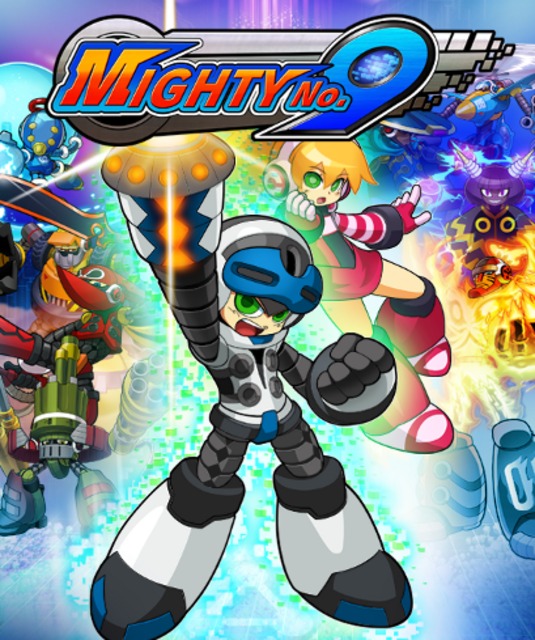Fudging the Numbers
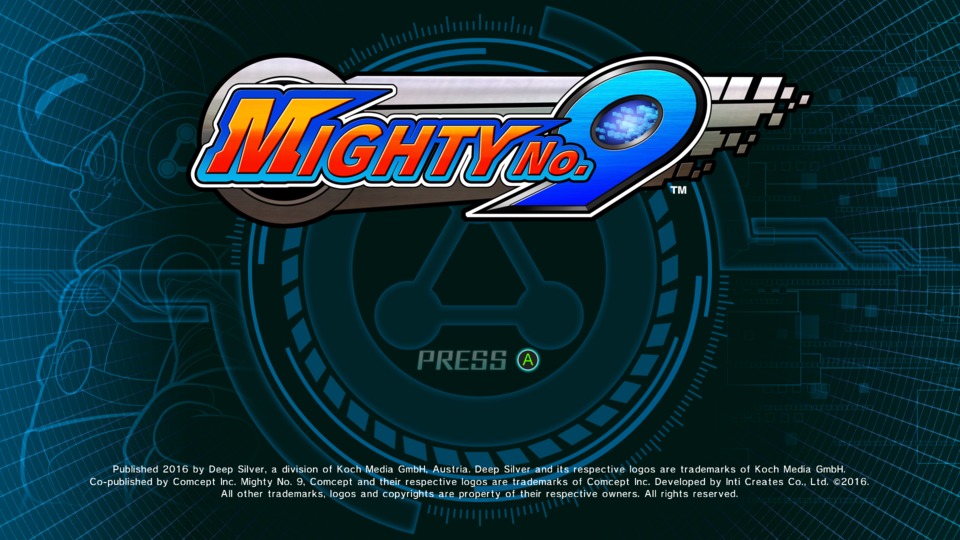
The story of Mighty No. 9’s Kickstarter campaign has been recounted about as many times as the game’s chief inspiration, Capcom’s Mega Man franchise, has had sequels and spinoffs. Overseen by a number of key producers and programmers of the classic (i.e. “numbered”) Mega Man games, Mighty No. 9 tries its best to pay homage to its roots while offering its own changes to spice up the tried-and-true formula, but the finished product doesn’t feel much like an evolution of the series as it promises.
The game is set up like most other Mega Man games from the ’90s – you star as Beck, the ninth in a line of combat robots designated as the “Mighty Numbers” by their creator, Dr. White. Things quickly turn ugly as a widespread computer virus causes Numbers 1 through 8 to turn violent. Since Beck is unaffected by the virus, it falls onto him to defeat the other robots and save the day. After a short introductory level, the player can visit one of eight different locales in any order, each guarded by one of the Mighty Numbers. Many are cut straight from the Mega Man cloth (a fire-themed oil refinery, an ice-themed water works, an electric-themed power plant, etc.), but a few, such as an ascent up No. 6’s radio tower, and the non-linear hide-and-seek chase through No. 8’s government building are there to mix things up a bit.
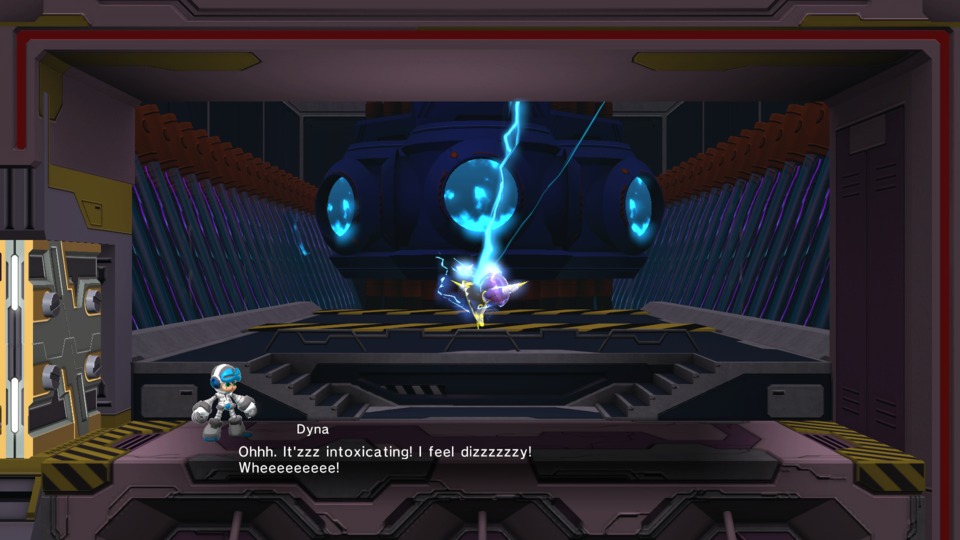
Beck’s arm cannon is his primary weapon against the many enemies he faces on his mission. However, doing this doesn’t destroy them completely, so Beck needs to dash into them once they start glowing to absorb their energy, granting him one of four different temporary power-ups – extra speed, piercing shots, extra armor, or power toward an energy tank that fully restores Beck’s health when used. This also applies somewhat to the bosses – rather than shooting them until they explode, you have to deal enough damage to destabilize them, then dash to absorb their energy before they can recover their health. Doing this quickly against multiple enemies in succession gives you more points and a better ranking after a stage has been cleared. Defeating a boss gives you their ability to use in later stages, such as the power to freeze enemies in place or slice them up with a sword, with Beck transforming accordingly with each new power he receives. These powers can be fun to use during boss fights, but are almost pointless to use against normal enemies, as the blaster gets the job done just fine.
Beck is surprisingly agile, and can grab onto ledges and dash around in ways that Mega Man could not. The dash move can be used almost indefinitely, allowing him to zip across levels with great speed, and chaining together dash-kills can be extremely satisfying in places where the level design and enemy placement allow the player to take advantage of it. Most of the time, the levels feel at odds with Beck’s mobility, forcing him to navigate through long sections with bottomless pits or other hazards that can kill him instantly. Death is the most painful part of the game, as not only do you lose points and power-ups every time you die, but you also have to sit through a ten-second (or longer, depending on platform) loading screen before being allowed to continue.
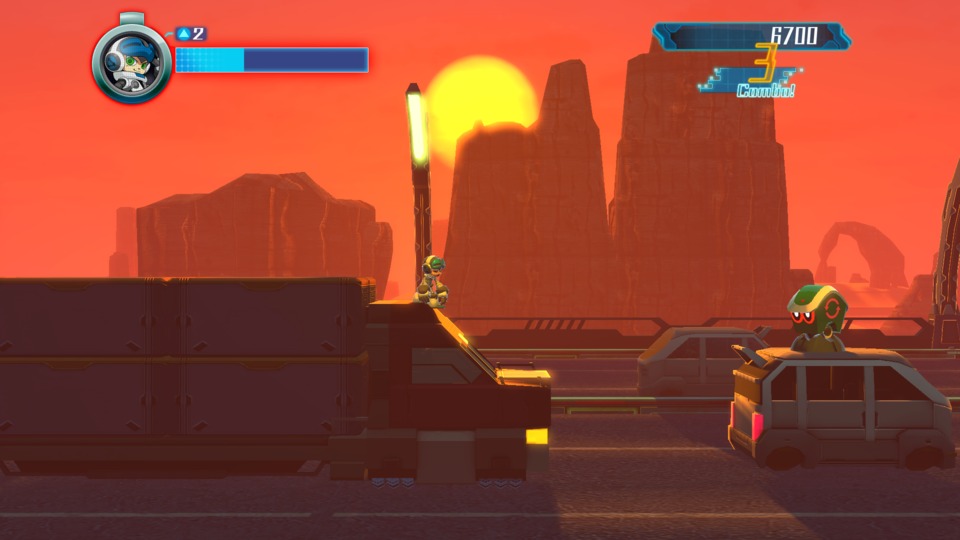
As far as presentation goes, Mighty No. 9 makes a bad first impression almost as soon as you start playing. Beck, his robotic “sister” Call, and the rest of the Mighty Numbers look appealing at first glance, but the dull pseudo-3D environments don’t compliment a lot of their designs very well. Only Dr. Sanda, Call’s easily-rattled inventor, appears to look better in 3D than he does in 2D. Explosions are a mess of red and orange pixels and don’t look intimidating at all. Most of the time, the game is able to maintain a smooth 60-frames-per-second clip, but it tends to drop sharply when there are a lot of graphical effects going on at once (such as the rain at the beginning of No. 7’s stage). And when the characters appear in cutscenes, they don’t move their lips or show much body language when conversing with one another.
Even with all of the volume settings turned all the way up, the sound effects and voice acting almost completely drown out the game’s music. There is an option to turn on retro-inspired music, which makes things somewhat better as the soundtrack does a better job of evoking the style of the older Mega Man games, even if the songs themselves aren’t as memorable. The voice acting ranges from acceptable (Dr. White and some of the Numbers) to annoying (Sanda, or Beck every time he absorbs an enemy, or Call when she does…anything during the stage when she becomes playable). Hearing the characters exchange expository banter about the game’s universe can be endearing the first time, but it gets annoying when the player is distracted by a pop-up text box when fighting a tough boss or navigating a platforming section where any slight mistake can be fatal.
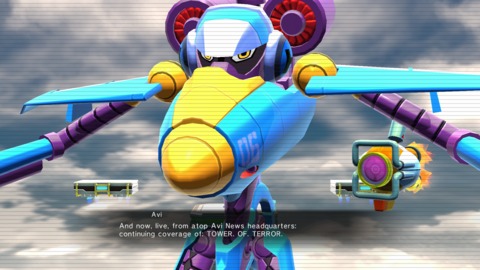
There are a few clever ideas to help separate the game from its predecessors, as well as addressing a few of their frustrations. Defeated bosses aren’t destroyed, but are freed from the influence of the virus, allowing them to come back and disable a few hazards for Beck in later levels. A helpful “Advice” button on the stage select screen makes it easier to figure out which stage to attack next, and there are a number of EX challenges that allow you to test out your newfound powers once you acquire them.
It’s unfortunate that Mighty No. 9 doesn’t live up to its pedigree, given the developers’ previous experience with the Mega Man series. The bland graphics and shaky voice acting don’t do a good job of getting the player immersed with the world, and the stop-and-go pacing of most of the levels prevent Beck from getting the most out of his arsenal and mobility. Mega Man fans can at least rest assured that the body of the franchise – the running and gunning, the power copying, the freeform stage select, and the tense encounters with bosses – was captured with this game. It would have been nice if the heart and soul of the series had been copied along with them.
